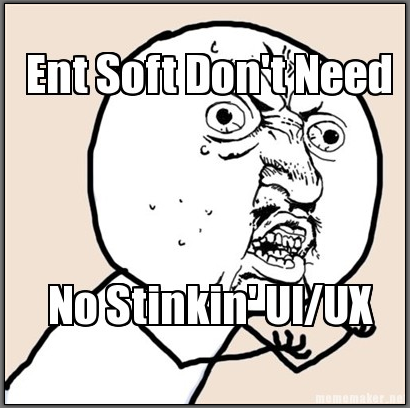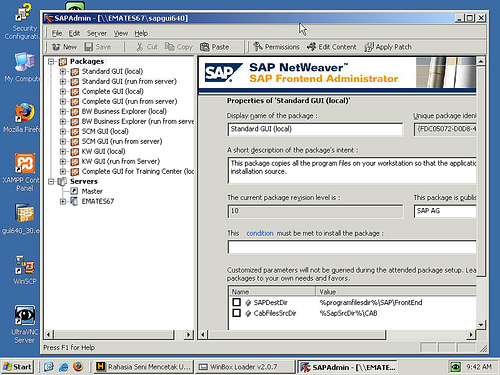 One thing I’ve learned is the majority of people who gab about “enterprise software” have absolutely no idea what enterprise software really is, nor have they ever really used it in the wild. This included me, despite have sold EchoSign to 100s of enterprise customers. At least, it included me, until I was a VP at at Fortune 500 company.
One thing I’ve learned is the majority of people who gab about “enterprise software” have absolutely no idea what enterprise software really is, nor have they ever really used it in the wild. This included me, despite have sold EchoSign to 100s of enterprise customers. At least, it included me, until I was a VP at at Fortune 500 company.
Trust me, having to use this stuff day-in, day-out is nothing like a quick demo or a cursory understanding of how enterprise software works in the wild. Just because you’ve sold a few seats to F500 companies doesn’t mean you have any idea how they really use enterprise software.
For example, I have now installed SAP myself on my computer — it took me a full day. I had to, job requirement. I never did figure out how to install the front-end on SAP though, so I just inputted the data straight into the database. I also spent over 4 hours trying to understand how to manage documents with Documentum (the upload tab for example, disappeared in Chrome, which is only to be expected from something (c) 2005). I also spent over 2 hours trying to figure out how to change my address on another legacy enterprise system. I learned how to work deftly with the IT help desk overseas.
All throughout it, I have yelled at my computer more than anytime in the past decade.
But — it doesn’t matter.
Why? Because you, the end user, aren’t the customer for most true enterprise software, or anything like the customer. You are just a user, a data-enterer. The customer is the VP in the enterprise consuming the data, and the only UI/UX that really matters is the VP’s report.
All that work with manually installing SAP? It all rolled up into a wonderful analytical report for HR, neatly integrated into the back-end systems. Death by Documentum? Yes, for me and the team, but it created an automated report for legal, without any work by them, legal, the consumers of the reports. Even Salesforce, a generation ahead of the rest, understood this early — it’s all about the dashboard for the VP, Sales/SalesOps in SFDC, so long as it’s reasonably easy for the reps to do all the data entry. Even for me, once we crossed $20m in ARR, Salesforce really only became about the ‘Executive Dashboard’.
It’s so easy to position your SaaS company as “10x easier to use than Sharepoint” or “an SAP killer” or even, “a Salesforce killer” due to your beautiful, tab-free UI with real-time updates, Node.JS cool featurettes, native and HTML5 mobile sites, and all the like. And let’s be clear, I can say, having used for real, as a Fortune 500 enterprise manager, SAP, Oracle, Salesforce, Taleo, Documentum, Ultipro, Ariba, enterprise CMS, enterprise CLM, Concur, enterprise workflow mgmt, you name it, all on a regular basis — some are nicer, but most have worse user interfaces than anything you can, could, and should design today. Sometimes horrifically worse.
So my learning is end-user UI/UX is critical for apps that need to be directly adopted by the end user — collaboration tools in particular. Our ease of use was critical to our adoption at EchoSign. But know thy enterprise market. State-of-the-art UI/UX is a great thing. But if end use is mandated — the end users have no choice — the only UI/UX that matters is the one the boss sees.


